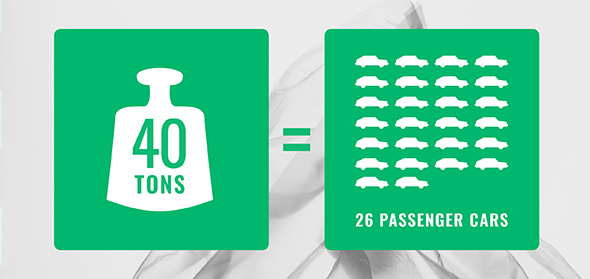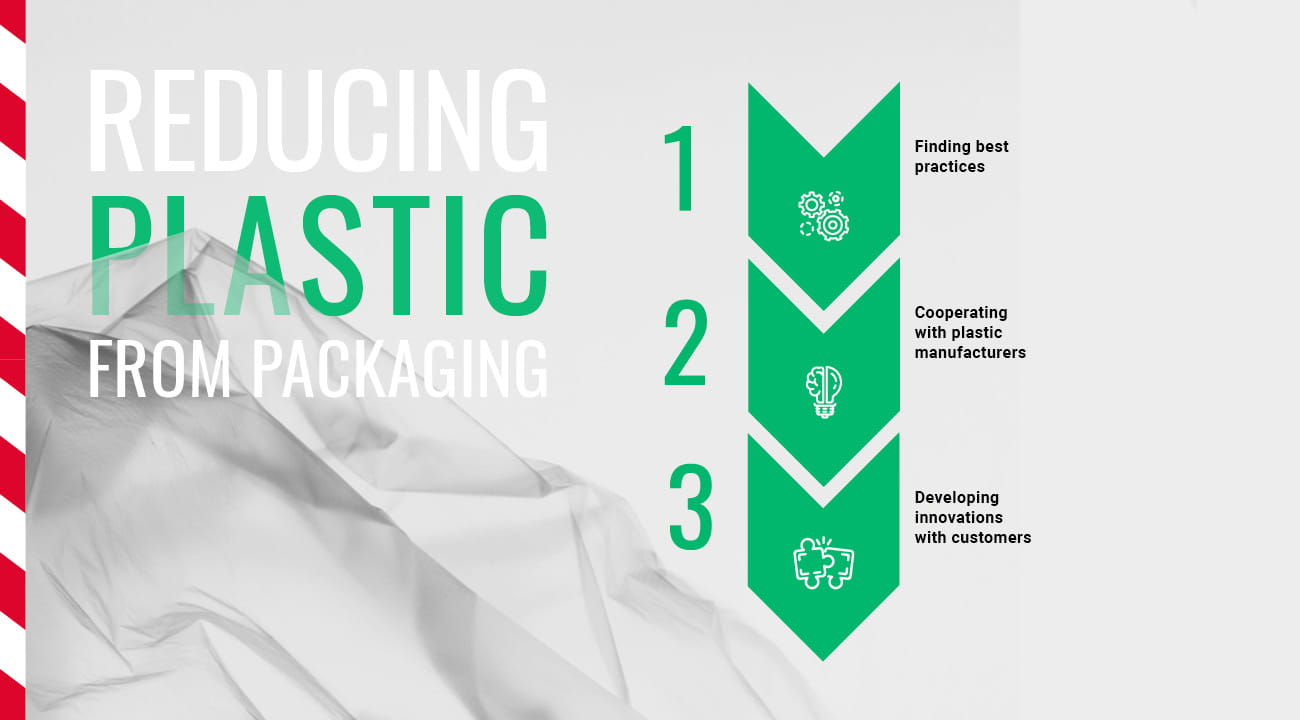1. Finding Best Practices
 Sharing good ideas with others. That was the starting point for Mats Ginman, the Process Development Manager who took over the assignment in 2020. The objective of the project is to cut Paroc’s plastic waste by 30% by 2030 and reduce the usage of single use pallets by 50%.
Sharing good ideas with others. That was the starting point for Mats Ginman, the Process Development Manager who took over the assignment in 2020. The objective of the project is to cut Paroc’s plastic waste by 30% by 2030 and reduce the usage of single use pallets by 50%.
What was the thickness of the plastic film used by different factories in Europe? How tight was the packaging compressed before it was wrapped in plastic? How was the packaging covered before transport?
“The aim of the project is to cut all unnecessary plastic. So, it made sense to examine the practices each factory has, gather the best ideas and share them with everyone”, Ginman says.
Ideas were indeed discovered. An example of this is a packing machine used in several factories. It is used for both compression wrapping as well as for regular packaging without compression. Compression packaging requires using a stronger, thicker plastic compared to what is used for regular, non-compressed packaging methods.
Ginman’s team noticed that in some of the Paroc factories the plastic was switched depending on the packaging type. A small idea as such but environmentally it really makes a difference. It was immediately introduced in the other locations, too.
“A simple idea of switching the plastic wrap depending on the packaging type actually saves 40 tons of plastic per factory every year.”
2. Development and Cooperation With Plastic Manufacturers
After going through the best practices at each Paroc factory, it was time to look at the bigger picture. Another significant way to reduce plastic is to cooperate with the manufacturers of plastic.
“The objective is to manufacture as durable a film as possible with minimum use of raw material. A film that is weatherproof, endures storing and compression, and can also be recycled for further use”, Ginman states.
There are packages outside in the Paroc factory yards even at this very moment. The test packages, for example in Hässleholm, Sweden, are there so that different types of plastic and packaging can be exposed to rain, snow, freezing weather and heat.
“The quality of the packaging is important to us. Only properly conducted testing can show us whether a packaging material is durable enough for different weather conditions”, Ginman says.
An MDO film has already been in use in the factories in Finland and Russia. The innovative technology means that the material is thinner, stiffer and stronger than normal LPDE plastic. As the MDO film can be stretched by up to 600%, it takes less raw material to manufacture.
The MDO film will now be introduced also in other Owens Corning Paroc factories that use compression packaging. According to Ginman, this will result into a decrease of 250 tons of plastic per year.
There is a need for plastic that endures compression as well as stretching. Not only is plastic saved by compressing the insulation slabs but emission from transportation is cut down as the packages take up less space.
3. Cooperation With Customers
The third step in reducing plastic is coming up next. Ginman believes that by cooperating closely with clients more ideas will emerge and help cut down unnecessary use of plastic.
The benefit for customers is evident. Plastic wrapping ensures that PAROC® products retain high quality through storage and transportation, but it generates costs and requires resources to have it recycled and handled at building sites.
There are already some examples of cooperation in Poland and the Baltic countries. That was where an idea that originated on a building site got developed into a packaging technique that reduces plastic by 50%.
One possible direction to explore is delivering the insulation slabs to the client without any packaging – directly from indoor storage to indoor storage.
“This idea could work with industrial manufacturers that are equipped with large indoor storage facilities. This is not necessarily suitable for building sites. I encourage our clients to get in touch so we can together come up with ways to reduce plastic as well as save the environment.”

 Sharing good ideas with others. That was the starting point for Mats Ginman, the Process Development Manager who took over the assignment in 2020. The objective of the project is to cut Paroc’s plastic waste by 30% by 2030 and reduce the usage of single use pallets by 50%.
Sharing good ideas with others. That was the starting point for Mats Ginman, the Process Development Manager who took over the assignment in 2020. The objective of the project is to cut Paroc’s plastic waste by 30% by 2030 and reduce the usage of single use pallets by 50%.